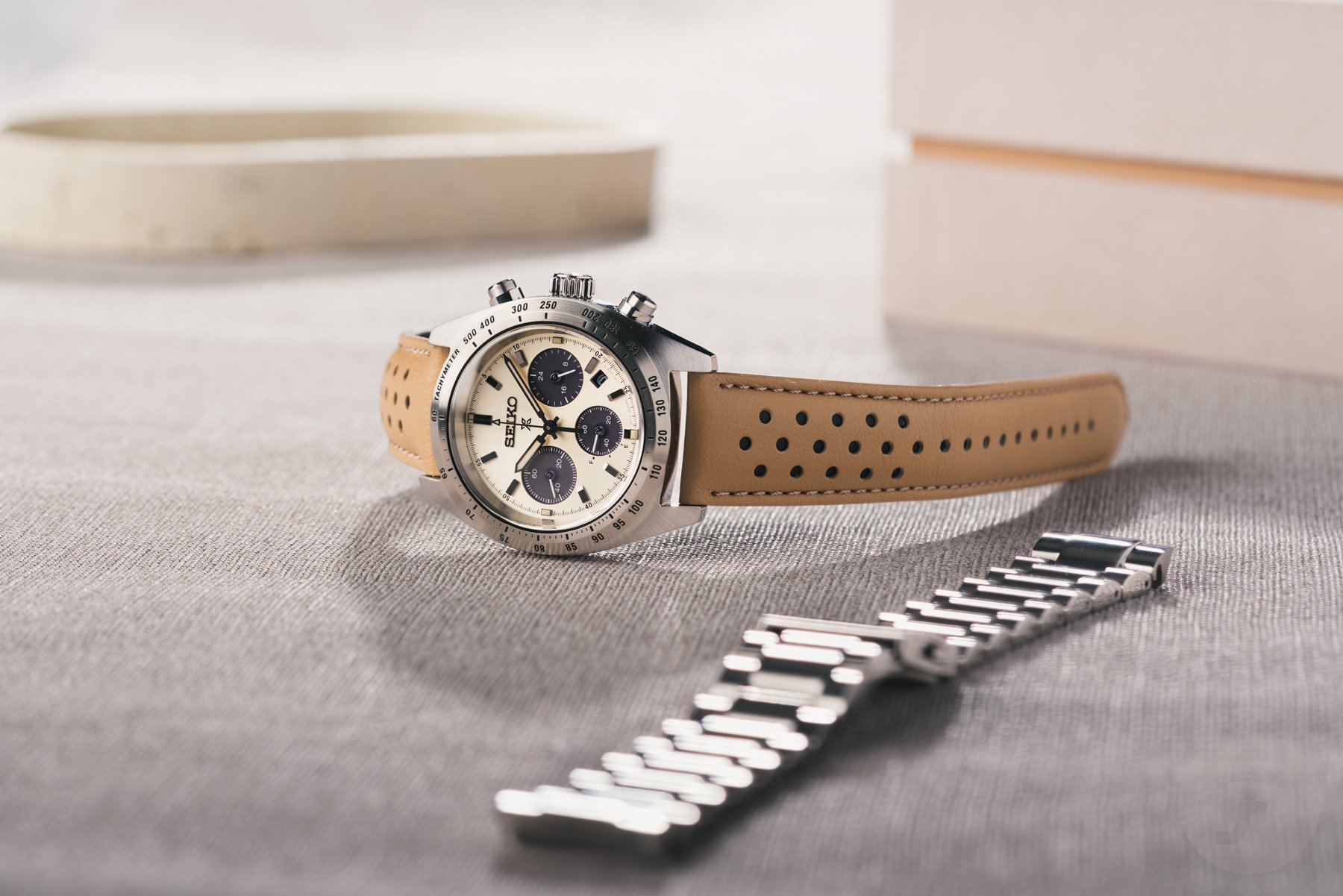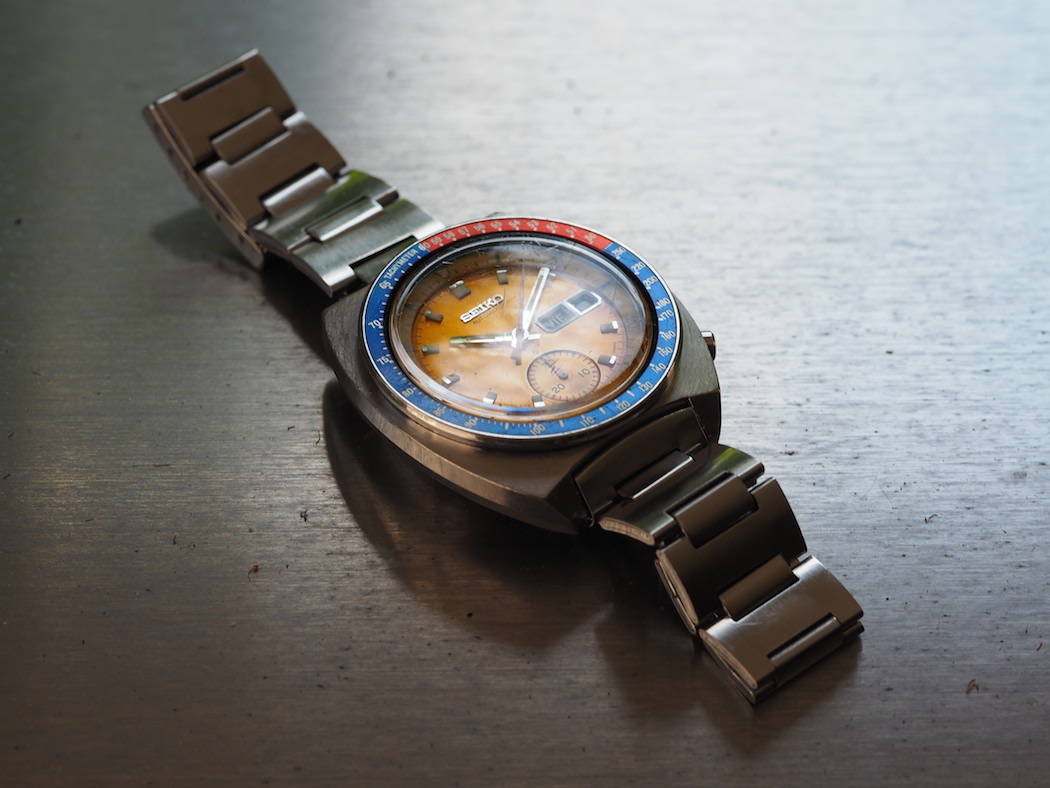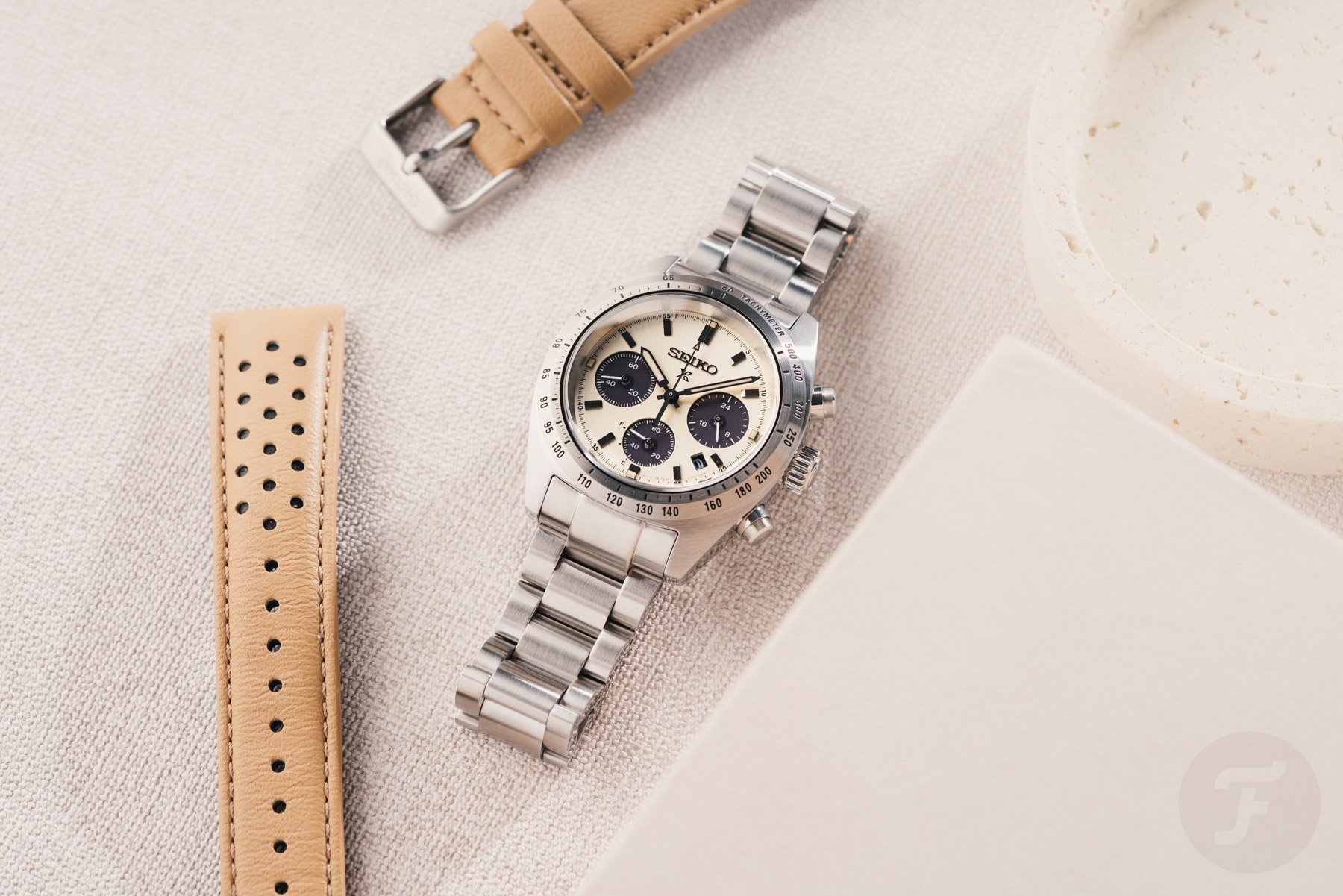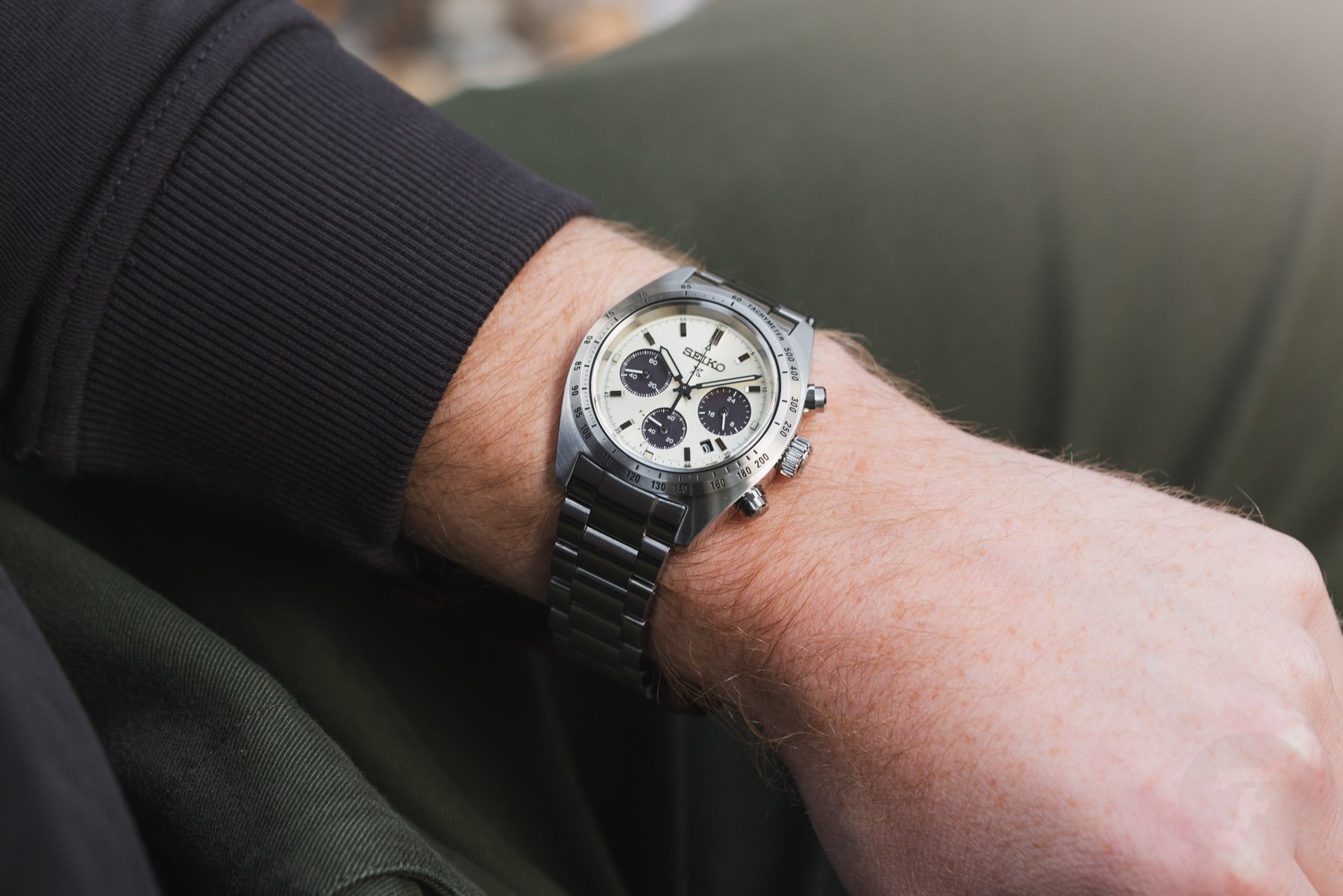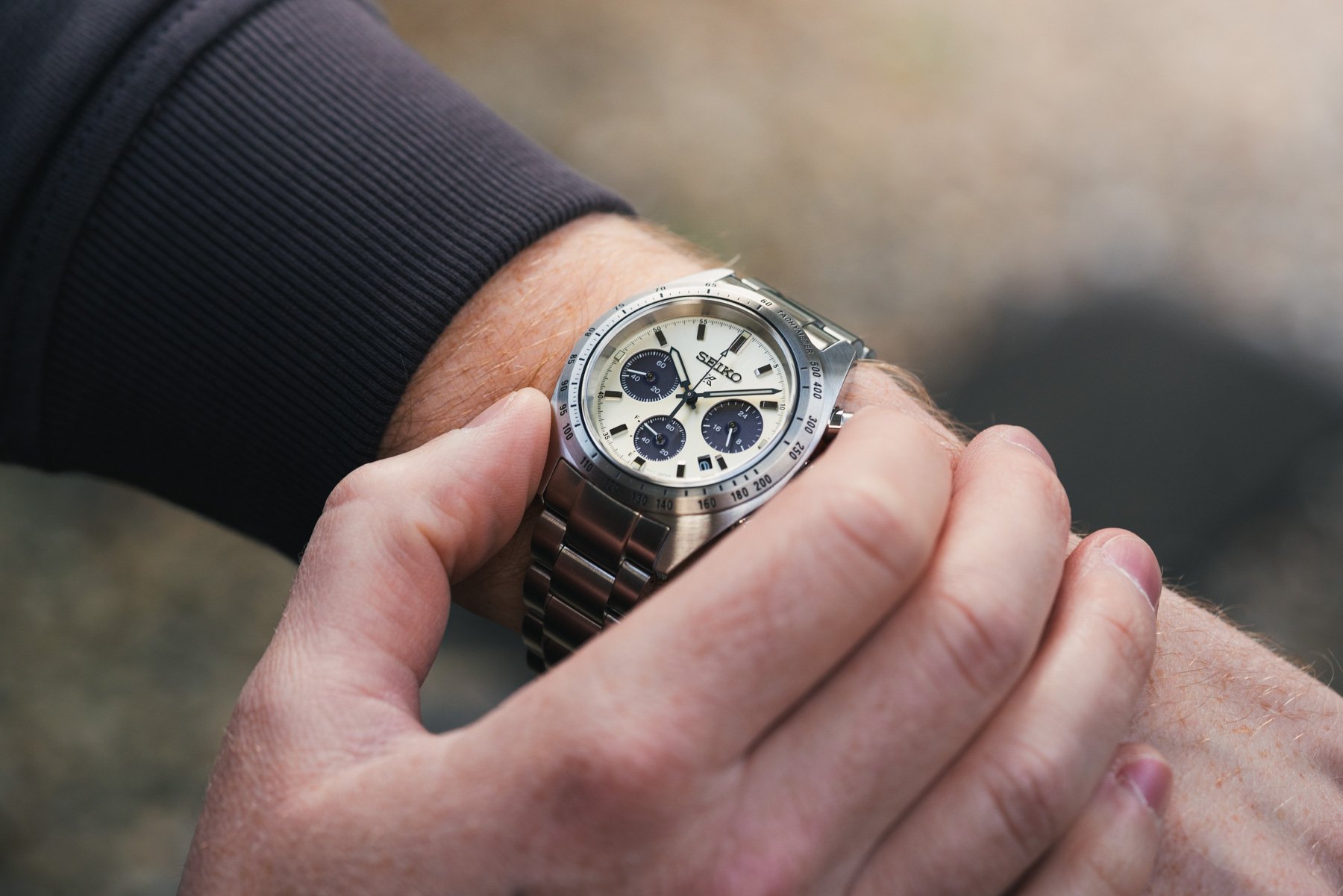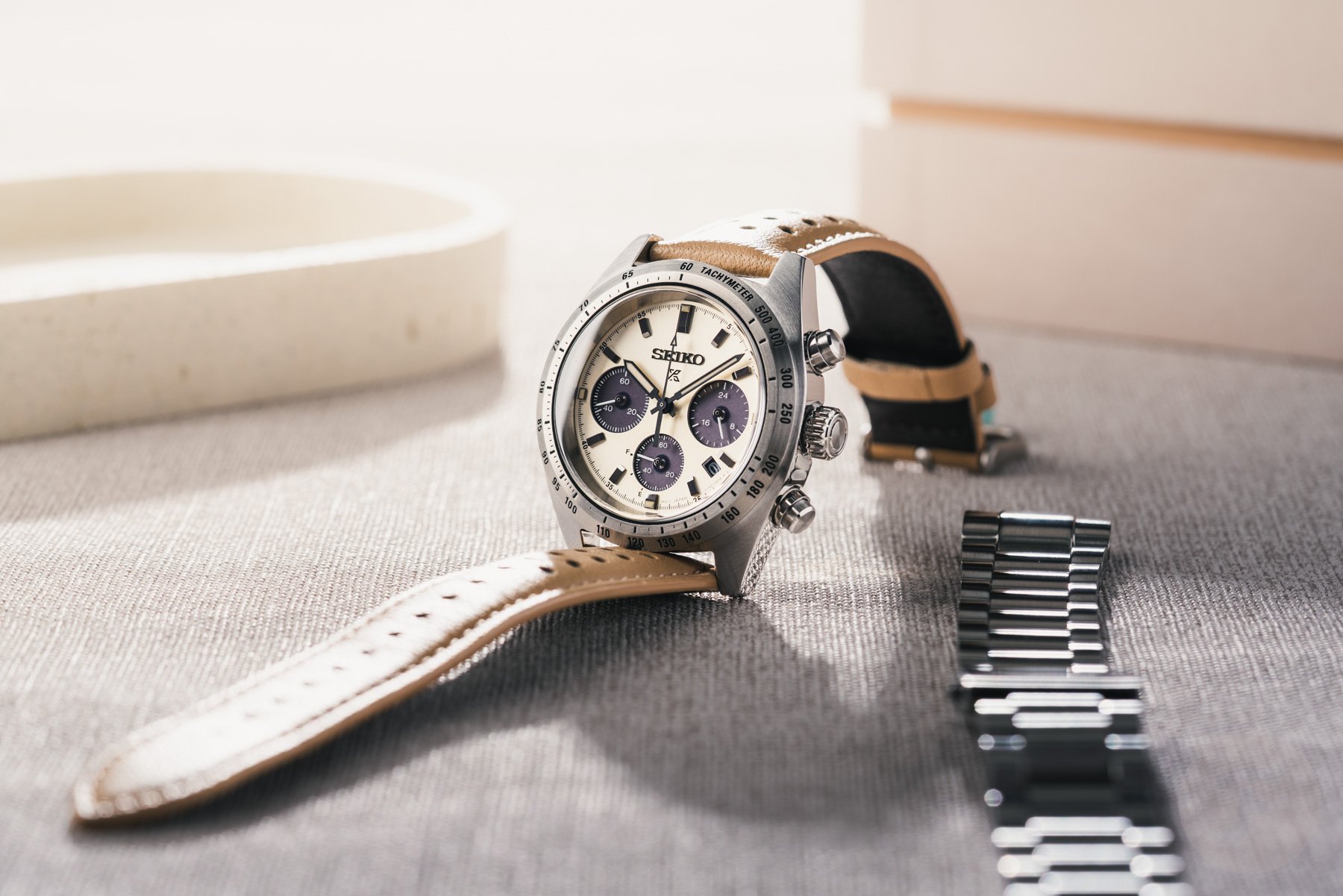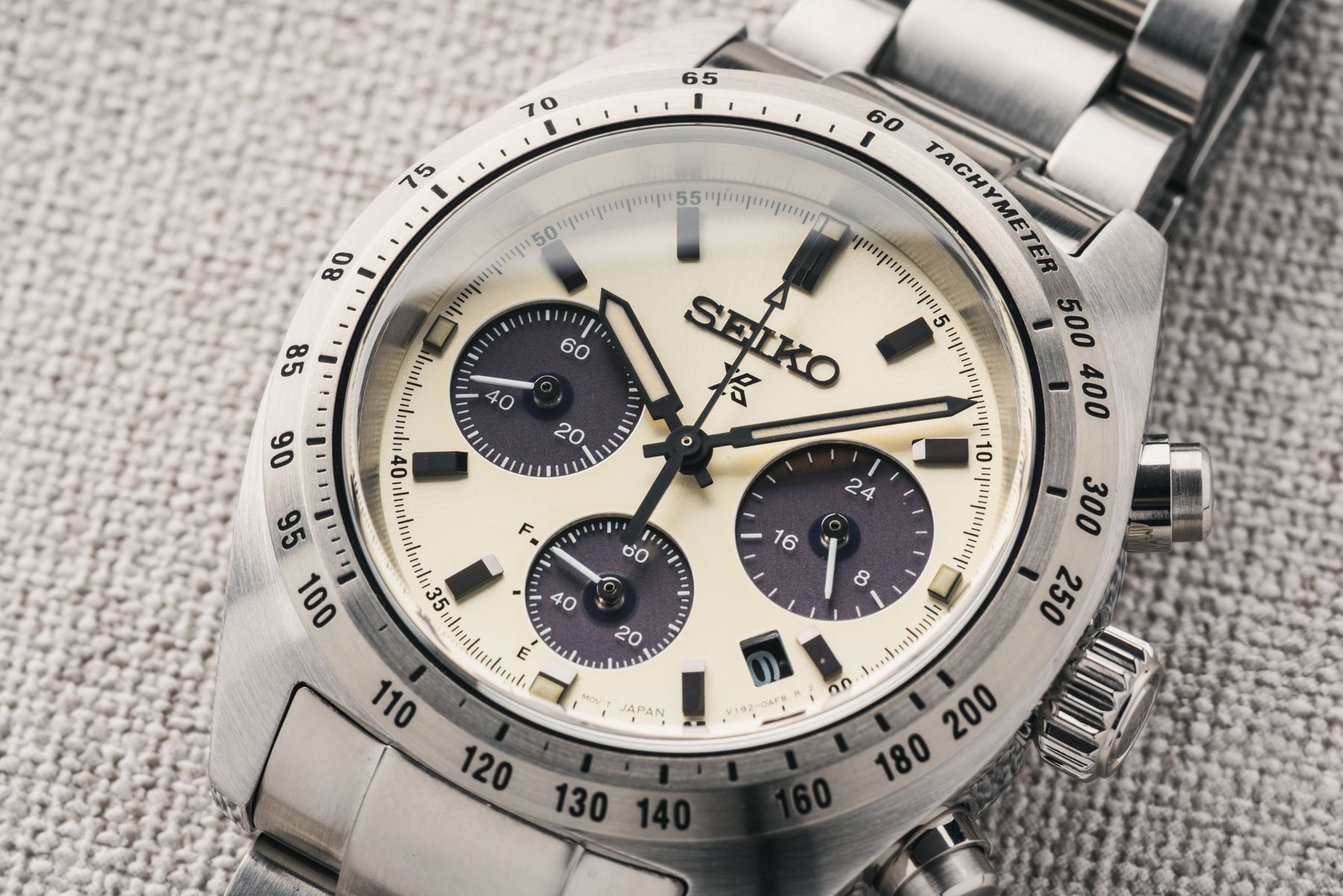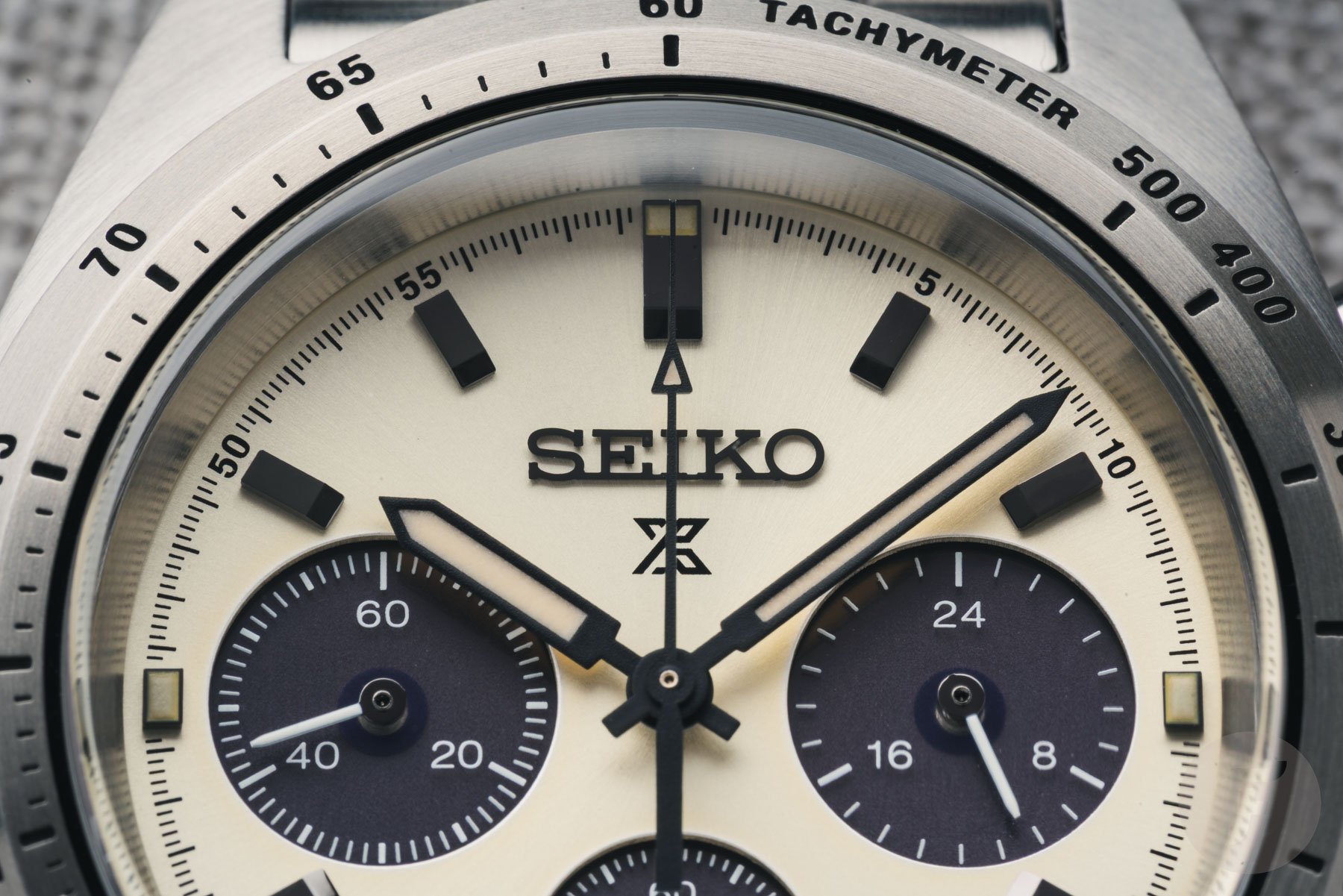The Seiko Speedtimer traces its roots back to the 1960s, offering plenty of sports timing and racing pedigree. Today, I got a chance to go hands-on with the line’s latest incarnation, the solar-powered SSC959 limited edition.
I say “limited,” but Seiko is producing a whopping 2,700 of these. Perhaps more important than its numerical limitation is its geographical exclusivity to Europe. Seiko regularly drops limited editions for specific regions; this time, it is our turn as Europeans. This latest LE costs €860 / £730 and will become available this November. Let’s have a closer look.
Seiko Speedtimer 101
I am sure you’ve read about Speedtimers before, but just in case, let’s start with a quick historical overview. The story of the Speedtimer begins in the 1960s, when Seiko was actively involved in professional sports timing. The brand had developed an advanced “heart-shaped cam” stopwatch mechanism that allowed greater precision in manual timing, and this pursuit of accuracy soon spilled over into wristwatches. In 1964, Seiko released Japan’s first wrist-worn chronograph, the Crown Chronograph, paving the way for something more ambitious — a self-winding chronograph for the wrist.
That breakthrough arrived in 1969 with the Seiko Speedtimer 6139, one of the world’s first fully integrated automatic chronographs. It combined a column wheel and a vertical clutch, both features still considered hallmarks of high-end chronograph design today. The Speedtimer’s most famous version is arguably the yellow-dial “Pogue” variant, which made its way into space on astronaut William Pogue’s wrist in 1973.
As the quartz revolution transformed the watch industry, Seiko’s focus shifted, and the Speedtimer name faded for several decades. In 2021, the brand revived the Speedtimer within the Prospex line, which has since seen the introduction of mechanical versions powered by 8R calibers, as well as solar-powered variants. Today’s SSC959 is part of the latter category and houses the Seiko V192 movement.
Seiko Prospex Speedtimer SSC959 specs
The Seiko Prospex Speedtimer SSC959 has a 39mm diameter, a 45.5mm lug-to-lug, and a 13.3mm thickness, keeping it compact for a chronograph. The case is crafted entirely from stainless steel, including the solid screw-in case back and the fixed bezel. The sapphire crystal and 100m water resistance make it perfectly capable of handling daily wear and light aquatic adventures.
As mentioned, inside beats Seiko’s solar-powered V192, a quartz chronograph movement that draws energy from both natural and artificial light. It offers a six-month power reserve when fully charged and includes a low-power warning through a two-second tick of the central seconds hand. You also get a more traditional power reserve indicator in the chronograph’s minute counter. Caliber V192 also provides a 24-hour indicator, a date display, and a chronograph that measures up to 60 minutes in 1/5-second increments.
The SSC959 comes fitted with a stainless steel bracelet with solid links and a folding clasp with a push-button release. It tapers neatly toward the clasp, complementing the watch’s vintage-inspired proportions. The 20mm lug spacing ensures compatibility with most strap collections. Seiko also includes a tan leather racing-style strap.
Wearing the Speedtimer SSC959
I found the Seiko Speedtimer SSC959 to be a joy to wear. Its proportions are spot on for a modern sports chronograph. It shows plenty of character and presence on the wrist without feeling overpowering or cumbersome. One detail that kept jumping out to me as particularly attractive is the bezel and its fold line, splitting it into two facets.
The SSC959’s dial looks distinctly Seiko. From the Prospex X logo to the ’70s-inspired printing and applied indexes, it cannot be mistaken for any other brand. The same goes for this limited edition’s unique color combination. The main color is a shade of cream with ever-so-slightly greenish undertones. The gray sub-dials carry a similar undertone, this time solar-panel purplish. The result looks like an updated 2025 version of the classic panda dial.
I prefer this latest Speedtimer on its bracelet. Sure, it is simple and a little rattly, but it suits the aesthetic very well. That said, the leather strap does emphasize the racing theme a bit more. It’s good that Seiko includes both as standard!
A capable vintage-inspired chronograph for everyday use
Seiko makes good use of the quartz technology of caliber V192, and you immediately notice it. After all, no mechanical chronograph comes with a minute counter that doubles as a power reserve indicator when the chronograph isn’t engaged. I like that Seiko adds a feature like this to set the quartz model apart and provide it with USPs. This way, it feels less like an affordable version of the mechanical models and more like something with a distinct identity.
I also appreciate the SSC959’s versatility. It feels at home with almost any attire and in almost any circumstance, save for the most formal of both. Even the colors, though rather specific, will play nicely with the majority of your wardrobe.
So, I have no gripes, then? Well, the watch could be slightly thinner, and quick-release and micro-adjustment mechanisms would have been great. Also, I do feel it is on the costly side. This may just be my Seikoholic brain being stuck in 2015 in terms of price perception, but I don’t think I am the only one. Still, you get a capable and versatile watch for the money.
What do you think of the Seiko Prospex Speedtimer SSC959? Let us know in the comments below!

